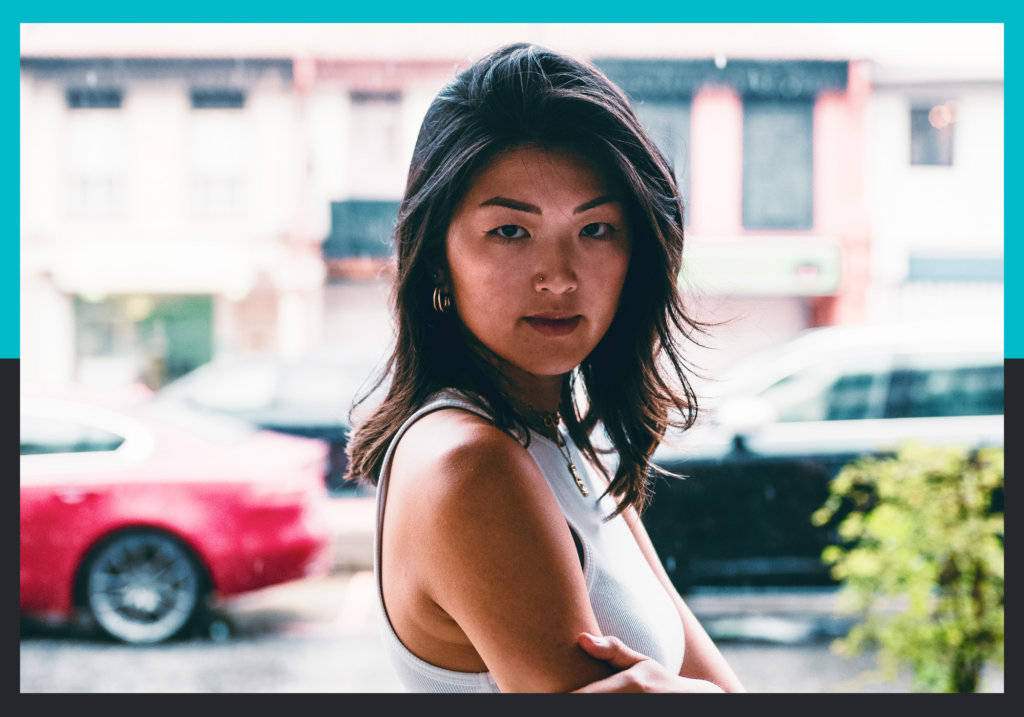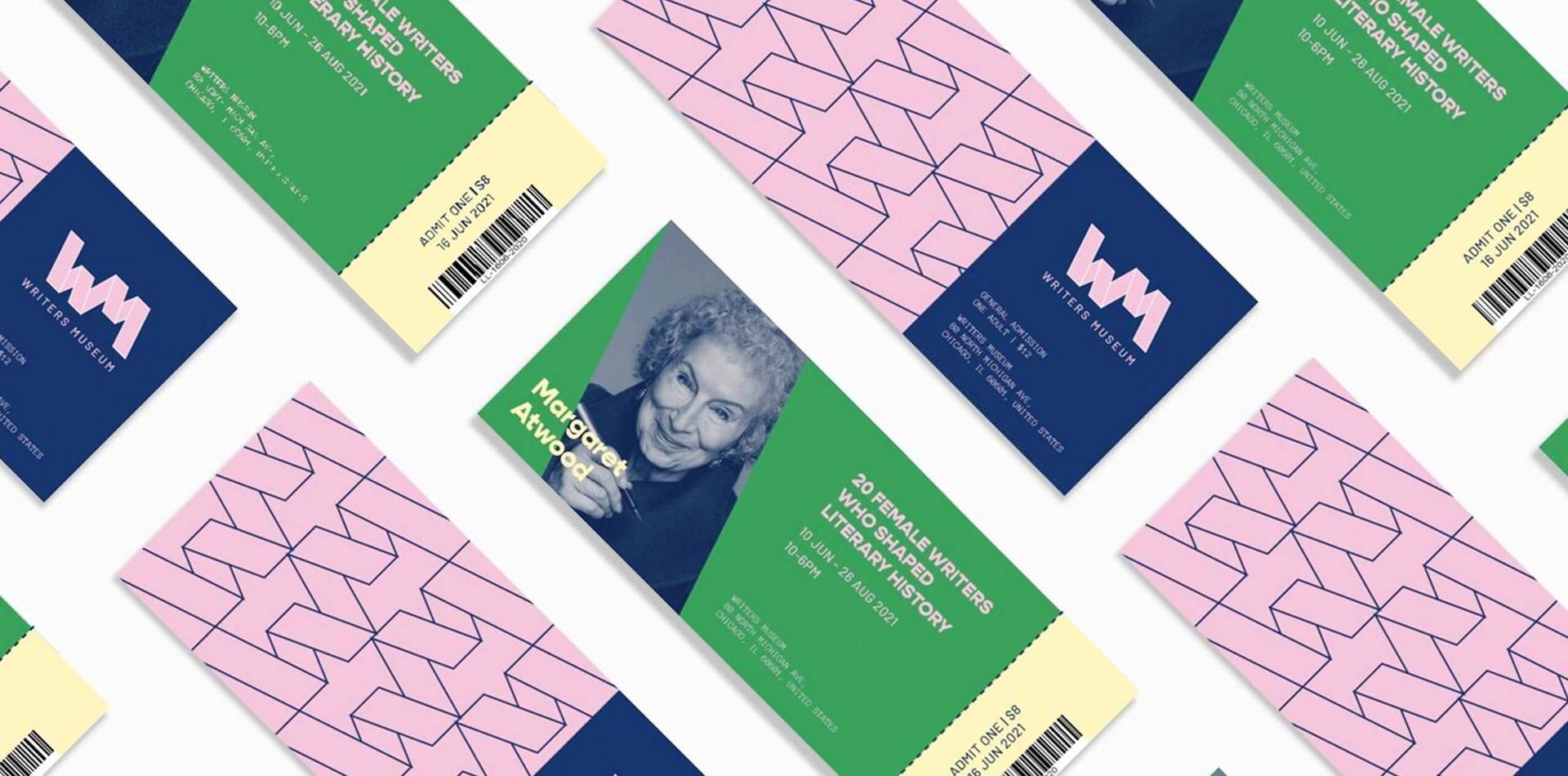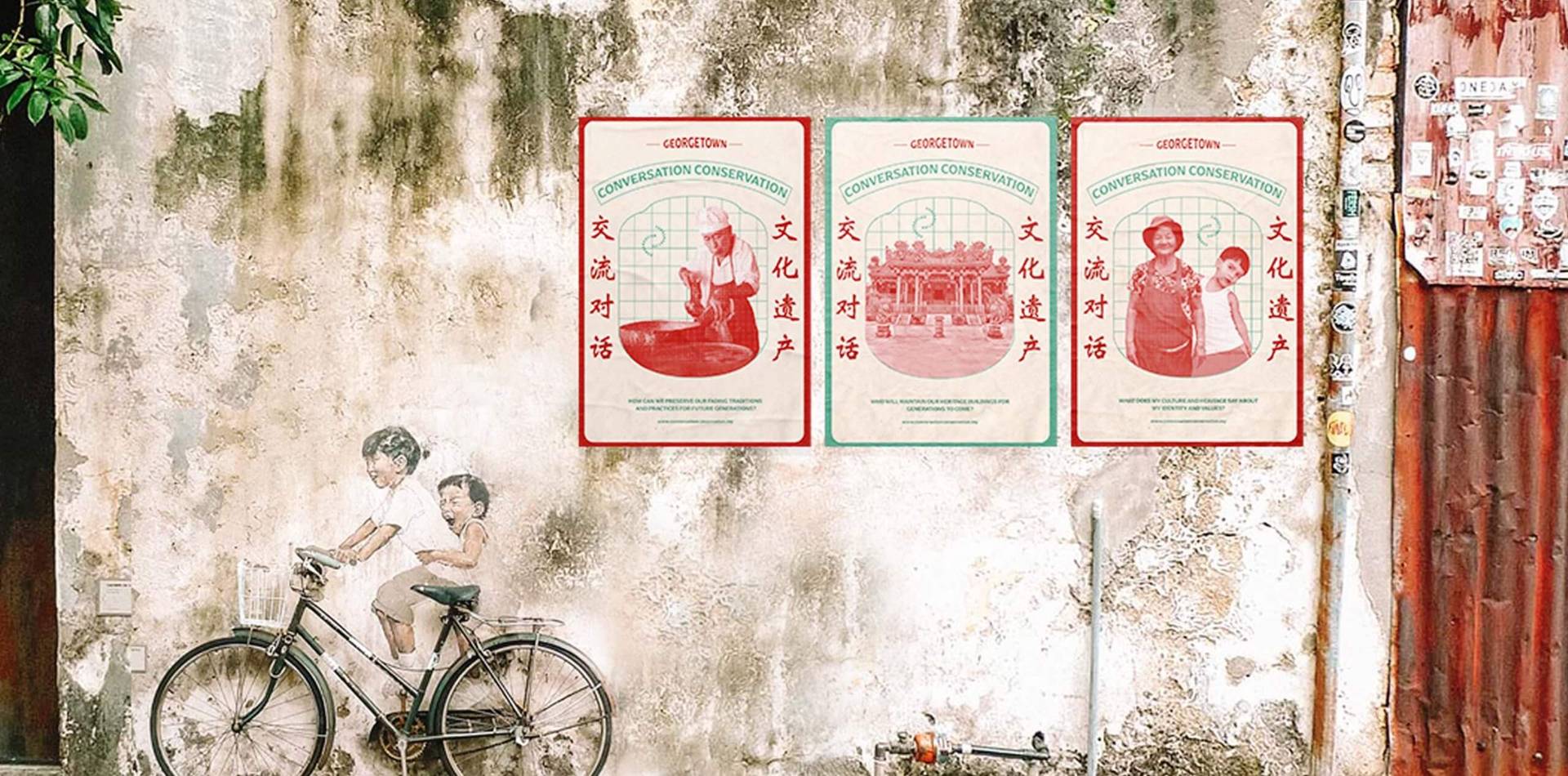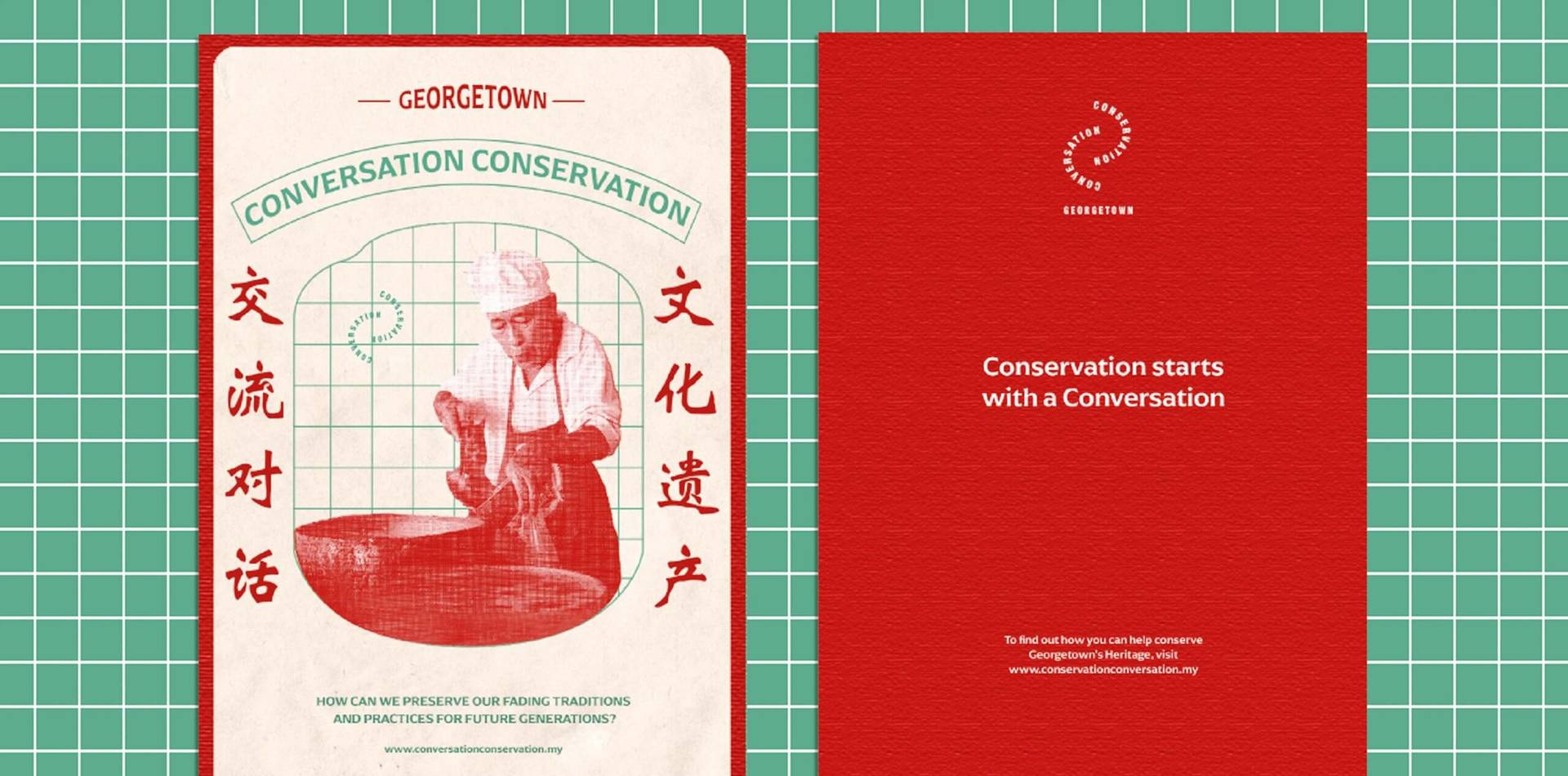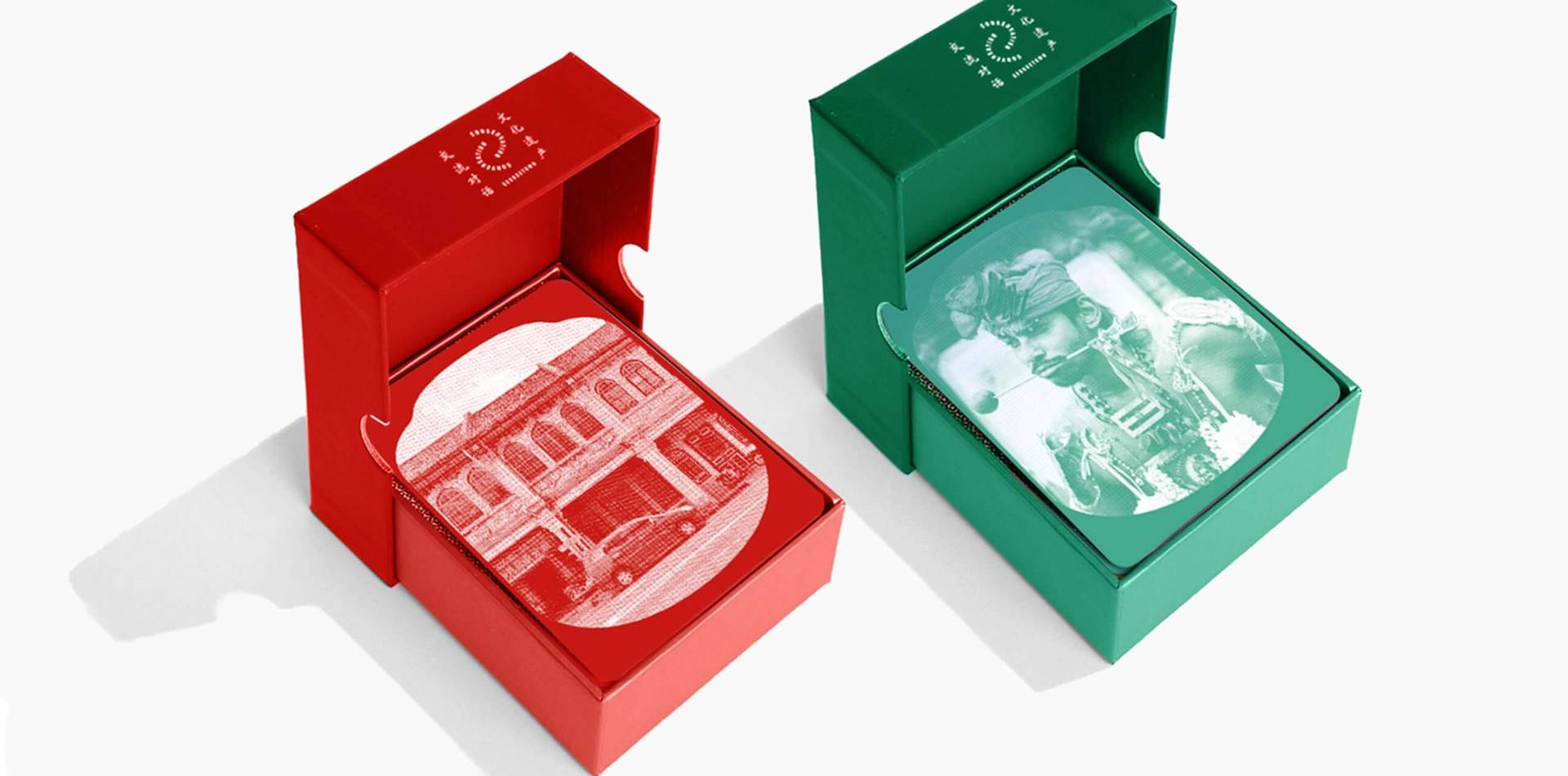Lin Loke is a talented multidisciplinary creative and professional currently based in London. In her day job, she works in strategy consulting for an MBB company; she is also a freelance photographer and designer.
In 2020 Lin enrolled in a part-time design course at Shillington College, an experience that allowed her to gain the extra tools and skills essential to her work practice – not only for design projects, but for anything that involves collaboration with others. She learnt how to ideate and propose design solutions that have the user at the centre, and to create visual messages that communicate effectively and at the same time are visually pleasing. Lin tells us, “Today, ‘Design’ is more of a lens and problem-solving methodology in my professional practice than an official role title.”
Originally from Singapore and Malaysia (Penang), Lin is proud of her heritage and connected to her roots. Her project titled ‘Conservation Conversation’ is a tribute to Penang’s street culture with the aim to of encouraging young generations to preserve the cultural heritage of the city, which is now threatened by globalisation. As she tells us, “The idea for this campaign emerged from a real heartache at seeing Penang head towards a route of irreversible cultural degradation if its inhabitants continue to disengage from the local community and its heritage. So I crafted a campaign that proposes heritage conservation starts with a conversation!”
Lin also believes that designers should break out of the ‘self-referential loop’ they often fall into when they look for inspiration online, preferring to look out for inspiration in the real world, by travelling and being curious at all times.

We caught up with Lin to find out more about how design feeds into her current role as a Strategy Consultant, what the role involves and her top tips for emerging creatives considering a career in design.
Let’s start at the beginning, why did you decide to become a designer?
I’ve always gravitated towards aesthetically pleasing, functional design. I was a shy kid, didn’t talk much, so I’d let sketches and drawing do the talking. Back in high school, I excelled in art, but I never took it further in my education or career. Traditional Asian parents pointed me down a more traditional and “practical” route and I eventually found myself going down a professional pathway in Strategy, Tech & Digital Innovation. During this time, I worked closely with UX/UI practitioners, designers, and creatives. I deeply admire their work, and especially their ability to translate concepts and ideas into tangible 2D and 3D designs, services, products, brands, and spaces.
Lots of ‘what ifs’ started ideating in my head. What if I had gone down the art and design route? What if I switched careers? What if…?
Something was telling me that my destination was not as important as the process and so I decided to pursue a part-time design course in 2020. I learnt so much in one year. I picked up tools, visual languages, and design methodologies that allowed me to articulate my ideas and turn them into tangible creations.
Today, ‘Design’ is more of a lens and problem-solving methodology in my professional practice than an official role title. I have benefitted immensely from studying it, including how I ideate and propose solutions around the user; how I co-design solutions with stakeholders through collaborative processes; how I explore various ideas and converge on a final solution; and how I communicate visually. Everything I deliver at the workplace, regardless of the process or the format of the output (e.g., presentation slide or report?), is clear and aesthetically pleasing, whilst articulating the process and solution effectively. As for creative graphic design projects, I dabble in hobby projects and freelance work during my free time.
“Today, ‘Design’ is more of a lens and problem-solving methodology in my professional practice than an official role title.”
Where do you get your inspiration from and how do you approach a new project?
When you search for design inspiration online, and especially on platforms like Pinterest, you often see remixes and recreations of the same concepts and ideas. Your Google search algorithm eventually creates a circular feedback loop where you end up seeing the same designs over and over again! This is the ‘self-referential design loop’.
Nothing is more unique than personal experiences. I try to tap into my memory pool during quiet reflection or revisiting old photographs and memorabilia.
My travels also provide an invaluable source of inspiration. Museums are an obvious place to start. But I also love peering out the window on those long bus or Uber rides through the urban jungle. Street life; street signs; store signages; interaction of different architectural materials or juxtaposition of clashing textures; building colour palette; eccentric street fashion; warm sunlight filtering through building gaps or windows; house plate numbers; local textiles, tiles, and pottery; and the vibrance of local cuisine and ingredients, etc.
I capture these images on my phone. When I return to my desk, I use the images to curate moodboards for prospective projects.
Tell us about a favourite project that you’ve worked on and why it’s important to you.
I was born to a Singaporean mom and Malaysian dad. Dad is from a Malaysian island called Penang. While I was born and raised in Singapore, I spent a huge part of my childhood in Penang. Every school holiday was spent with my grandparents roaming around Penang’s heritage sites, beaches and eating the tastiest street food.
My grandpa is a Chinese immigrant who settled in Penang in the 1940s to escape the Japanese invasion of China during World War II. Together with many other settlers from Europe, China, India, Burma, the Middle East, they worked hard and contributed to the development of the town. Each of the settlers brought with them their unique traditions which influenced the shape of Penang’s vibrant, multicultural society and heritage today.
In 2008, Georgetown, Penang, was granted UNESCO World Heritage Town status. Sustained by an ageing population, its cultures and traditions are slowly fading. Younger generations are becoming less interested in local heritage buildings and preserving traditional crafts, tools, and methods. This change is driven by many factors, a key one being globalisation and standardisation of media, education, and tastes and preferences. Many from younger generations are moving out of heritage areas, choosing to live in newer districts.
“The idea for this campaign emerged from a real heartache at seeing Penang head towards a route of irreversible cultural degradation if its inhabitants continue to disengage from the local community and its heritage. So I crafted a campaign that proposes heritage conservation starts with a conversation!”
The campaign imagines a set of workshops, talks and walking tours around Georgetown to kickstart conversations around preserving cultural heritage. The visual identity for this campaign borrows visual references from memories in Penang, including bilingual signages, faded walls with paint peeling off them, and green square grids from Chinese journal book grid paper. I’ve also included photos that I took of locals and heritage sites on previous visits to Penang.
What top tips would you give to emerging creatives considering studying design?
Do it! I benefited a lot from studying design. Although my professional title does not include the word ‘designer’, design is still a very big part of how I think, communicate, and solve problems.
Since graduating from my part-time graphic design course in 2020, I have more confidence in communicating with designers, as well as articulating the importance of design to others.
In my previous company, I led a global Design and UX Scale-up Programme for 16,000 members of my firm. In this programme, a user-centred approach was employed to co-design a set of recommendations and pilots to increase UX awareness and capability in various parts of the global business.
Today, in my current role as a Strategy Consultant, design thinking is a key problem-solving methodology: when working with airline/ insurance clients on designing or redesigning customer journeys for a new digital product for example, it’s all about understanding the user you are designing for: What are their mindsets and behaviours? What are their pain points? How can we propose solutions that offer compelling user experience and delight?
Design thinking, graphic design, digital design are some skills that have helped me immensely in my work and can benefit any profession or business. Regardless of your destination, design is an extremely valuable and useful skill. The learning process was also most enjoyable.
Where do you think the design industry is heading in the next five years and how will you adapt?
The World Economic Forum suggested a list of the top job skills in 2025. These include, but are not limited to:
- Creativity, originality, and initiative
- Complex problem-solving
- Analytical thinking and innovation
Design is a powerful instrument which embodies and translates these skills into something meaningful, useful, and tangible. Additionally, as businesses continue to transform themselves digitally, digital design will continue to gain importance. This means an increased demand for UX research and UXUI design, product design (digital and hardware), interaction design, service design, graphic design and visual communications, etc.
“Design-led innovation will continue to disrupt all industries as individuals, businesses and governments continue to navigate an increasingly ambiguous and ever-changing global landscape.”
While design styles, processes and trends are always evolving, it’s important to understand the core principles that underpin Design. These core principles include empathy; user-centered decision-making; diversity and inclusion; and constant testing and reiteration of your solution.
